|



|
|
Using
Soil Erosion Modeling for Improved Conservation Planning:
A GIS-based
Tutorial
|
Court Creek Pilot Watershed -
TOPOGRAPHIC ANALYSIS AND EROSION MODELING
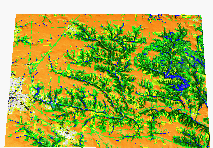
Lower resolution (20m/10m) analysis aimed at land use management at a regional/watershed
scale
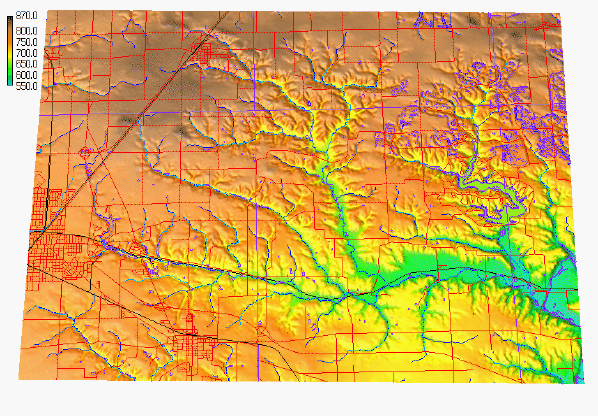 |
DEM (20m resolution derived from 30m DEM USGS), streams,
roads and wetlands |
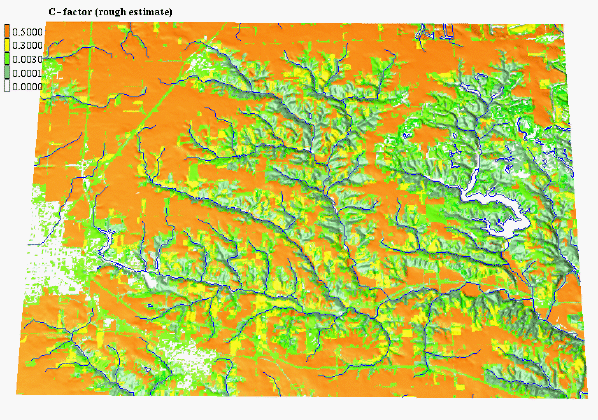 |
C-factor, very rough estimate based on the land use
map and general published values |
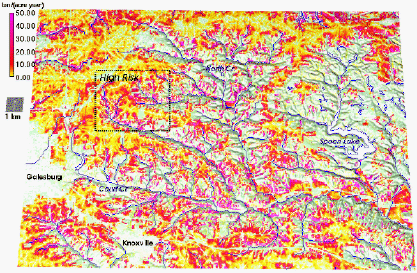 |
Spatial distribution of erosion risk estimated
by modified USLE |
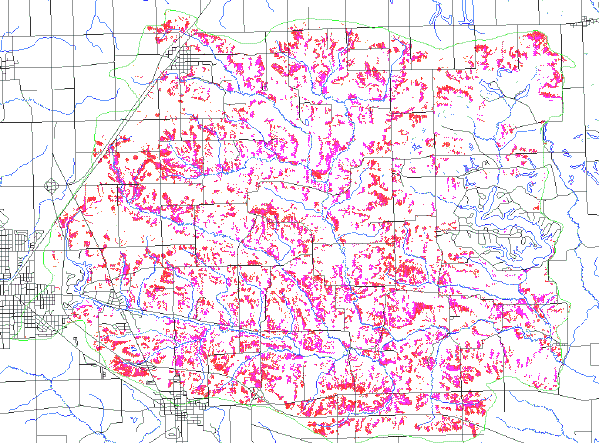 |
|
| Locations with potential for high erosion estimated
by modified USLE - the total area is 10,000 acres, which is about 16% of total
Court Creek watershed. These areas have a potential to produce 87% of soil
loss. Most of this soil is deposited before it can reach the streams. The high
risk areas are mostly located between the flat upland and forested areas along
the streams, on row crop and grain fields. The spatial extent and rates may be
overestimated because no prevention measures were considered. |
|
Analysis of new 10m DEM
Analysis of soil detachment and erosion/deposition patterns
was performed using a 10m DEM (see discussion about its problems
below). The patterns were simulated for the hydrologic
unit 52 for the following scenarios: bare soil, corn,
corn+60ft stream buffer, corn+100ft stream buffer, corn+60ft stream
buffer+forest on slopes steeper than 10%, current (1993) land use, corn + protective
areas (dense grass, forest) in locations with detachment rate higher than 10t/ay.
The results (maps and numbers) are organized in a TABLE
and include some comments and suggestions.
There seem to be waves along contours which
may cause problems for erosion/deposition modeling, if these waves
are artificial:
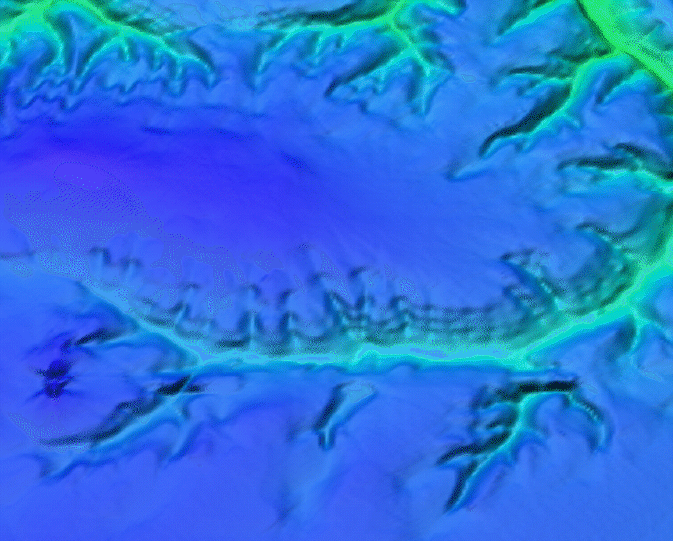 |
3D view of terrain within hydrologic unit 102
|
 |
Hydrologic unit 102 can be found along the bottom of this picture |
The new DEM has substantially more detail than the 30 m DEM. Although the total amount of water flowing out of the watershed would be
the same, the new DEM shows that the flow from hill slopes and first order
watersheds occurs more in the form of concentrated flow rather than sheet flow
predicted using the 30m DEM. The following figures show the flow patterns derived
from the DEMs that we have been using (note these are draft pictures and will be
replaced by more consistent ones in the final document)
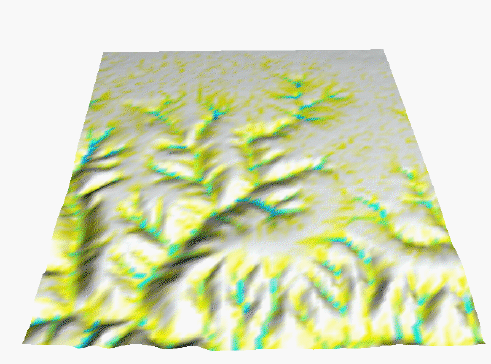 |
flow pattern derived from the original 30m DEM |
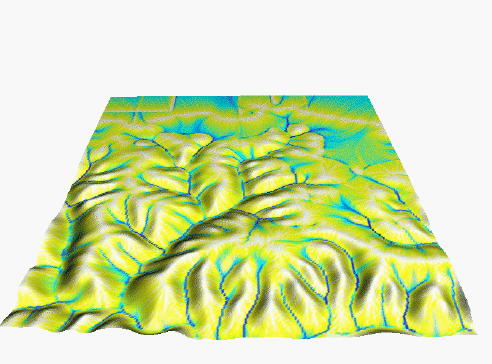 |
flow pattern derived from the smoothed new 10m DEM |
Sub-watersheds with high erosion risk in headwater areas
Detailed analysis of a sub-watershed was performed using the same data as the analysis for
the entire watershed. The original DEM was re-interpolated and smoothed
from 30m resolution to 10m resolution to get better representation of terrain
geometry, however, no new information was added.
The results of the erosion/deposition
model indicate that there is some limited potential for deposition within
the less protected headwater areas. This indicates that while farmers may
be losing some soil there, part of the eroded soil moves only for a short
distance. Further modeling and analysis needs to be performed to estimate how
much sediment can be delivered to streams and whether more protection in these
areas
could have any substantial impact on water and sediment flow downstream.
More details
Up
Hohenfels Example
Camp Shelby extension
Court Creek Pilot Watershed
Court Creek Erosion Example
Simulation of land use impact on erosion and deposition using SIMWE
Interpolation and simulation of terrain development with hedges
|
 HOME
H. Mitasova, et al., Geographic
Modeling Systems Lab, UIUC HOME
H. Mitasova, et al., Geographic
Modeling Systems Lab, UIUC
|








